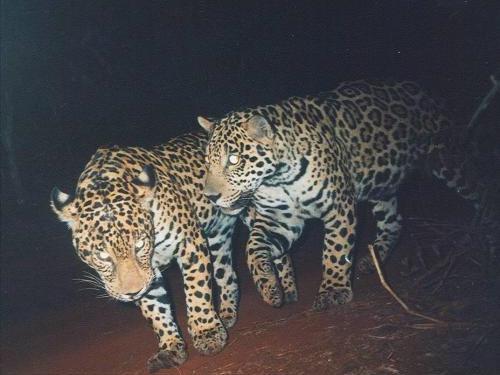Agustin Paviolo
Other projects
17 Jan 2004
Jaguar (Panthera onca) Densities in the Atlantic Forest of Argentina: Its Relationship with Prey Availability, Hunting Pressure and the Presence of Pumas (Puma concolor) I
15 Mar 2010
A Research Project to Help Preserve the Endangered Jaguar Population of the Green Corridor of Misiones, Argentina
This project will assess the ecology and population size of jaguars needed to conduct a Population Viability Analysis and for guiding conservation activities. By understanding which are the limiting factors that affect the carrying capacity of this jaguar population we can improve its chances of long term survival.

The Upper Paraná Atlantic Forest is one the most endangered forest ecoregions, with about 7% of its original area remaining, mostly in the Misiones province of Argentina and neighbouring areas of Brazil. This area also contains the southernmost jaguar population in the world. The survival of this jaguar population is important for the conservation of the ecoregion. Jaguars play an important roll in the ecosystem for their top-down regulation effect, also the jaguar is considered an umbrella species and thus, by maintaining a viable population of this species, we will be protecting a large part of the biodiversity. Since 2003 with support of many governmental and non governmental organizations we are carrying out this project that is aimed to asses the status and threats of this jaguar population. In 2004 we began to develop a Population Analysis Viability in collaboration with researchers from Brazil and USA using the information generated by our project. The results of this first PVA will serve as a main tool to elaborate the first management plan for this jaguar population that will be finished during the first months of 2008. The next step of our project is to obtain jaguar population dynamics parameters and habitat use information with the propose to improve the PVA process and the management plan.
This project is providing the basic information on the ecology and size of this jaguar population. Also include the monitoring of jaguar preys species and other predators by camera traps generating a lot of information of all the medium and large terrestrial mammals of the Upper Atlantic Forest. To obtain information on jaguar population dynamics we will to repeat a camera-traps survey in one of the studies areas (Iguazú National Park already surveyed in 2004 and 2006). The repetition of surveys in the same area in subsequent years permits to estimate survivorship and turn over rate. To assess habitat use of jaguars in this population we will use GPS collars. These collars permit store jaguar positions and after a determined period recover them assuring a complete data set. During 2008 we will capture jaguars in order to put the collars. Captures will be done in baited cage traps by a very experienced veterinary staff and following the most animal health secure protocols. Vet staff will take flood samples that will serve to examine health status and to develop conservation genetics studies of jaguars.